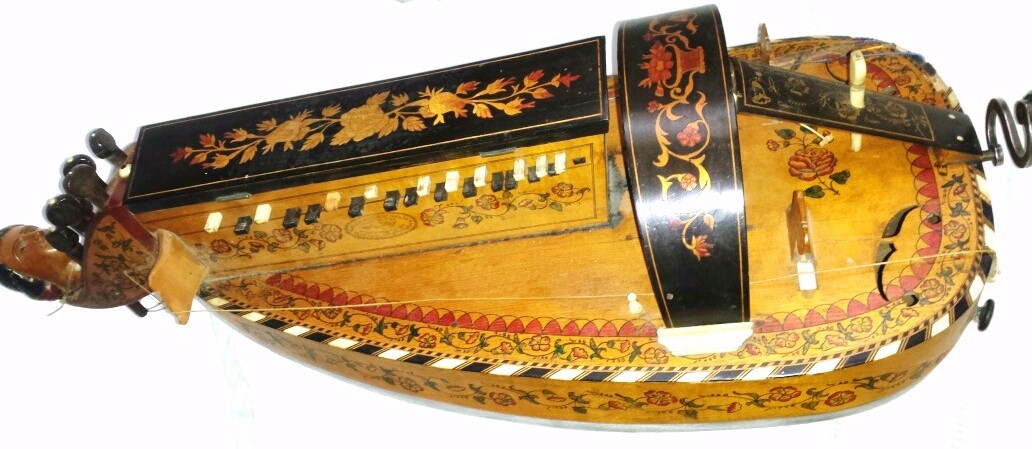Old Musical Instruments
Buying-Selling Early Musical Instruments
William Petit wpetit@sfr.fr Tel 00 33 6 13 12 43 22
Appraisal
Saxophones Selmer
Saxophones Adolphe Sax
Flûtes
Woodwind
Brasswind
Mandolins
Strings
Violin-Viola d'Amore-Quinton
Miscellaneous
Hurdy Gurdy Pajot
The Hurdy-Gurdy is a stringed instrument that produces sound by a crank-turned, rosined wheel rubbing against the strings.
The wheel functions much like a violin bow, and single notes played on the instrument sound similar to those of a violin. Melodies are played on a keyboard that presses tangents — small wedges, typically made of wood — against one or more of the strings to change their pitch.
Like most other acoustic stringed instruments, it has a sound board to make the vibration of the strings audible.
Most hurdy-gurdies have multiple drone strings, which give a constant pitch accompaniment to the melody, resulting in a sound similar to that of bagpipes.
For this reason, the hurdy-gurdy is often used interchangeably or along with bagpipes, particularly in Occitan, Catalan, Sardinian, Cajun French and contemporary Galician and Hungarian folk music.
